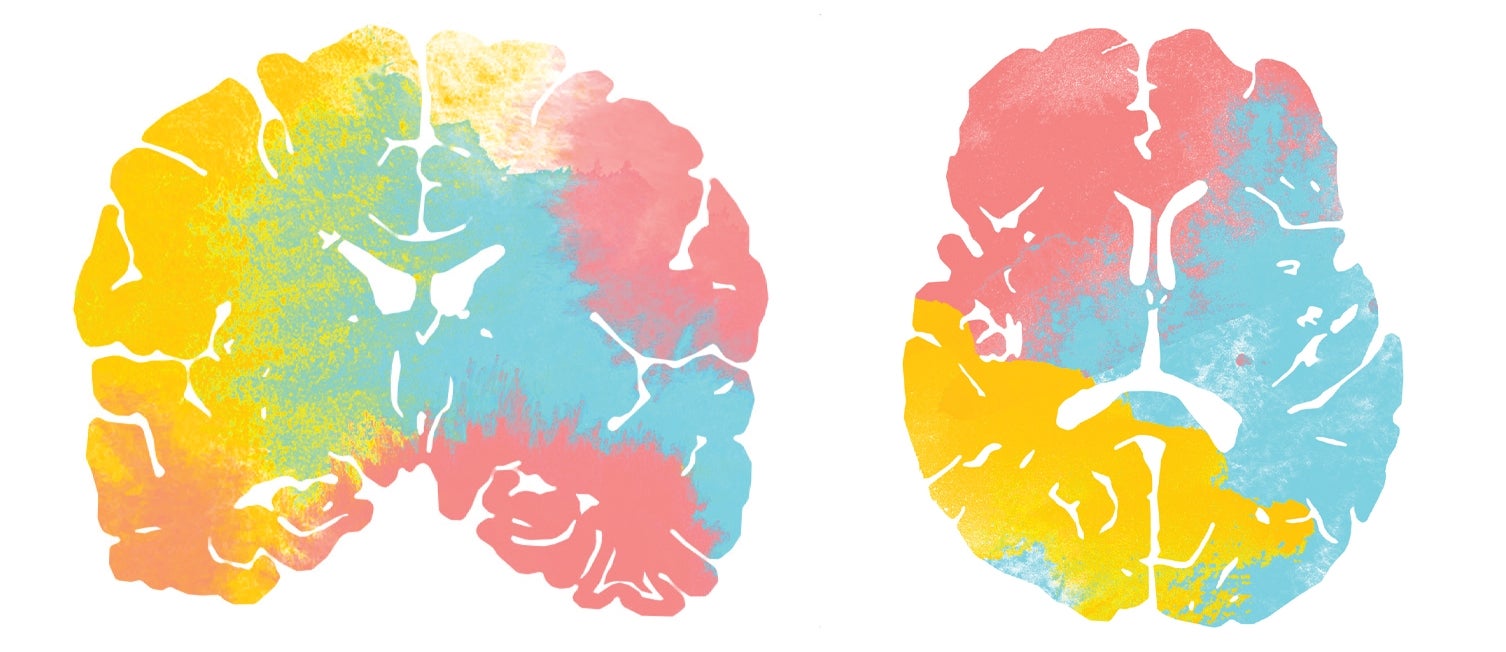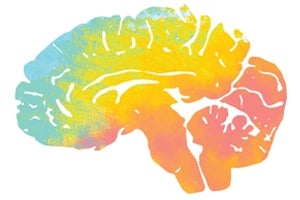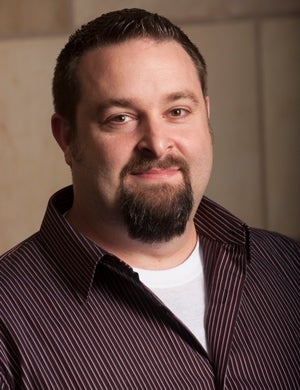
Beyond psychedelics
New pathways for lasting brain health
By Sharon Knox | November 1, 2024
The UC Davis Institute for Psychedelics and Neurotherapeutics (IPN) is unlocking an unprecedented approach to treating conditions from Alzheimer’s disease to schizophrenia.
By studying how psychedelics work on the molecular, cellular and circuit levels, IPN researchers aim to optimize delivery of their healing capabilities and create new molecules tailored for specific disease indications.
The goal: new medicines that restore brain cell health and repair damaged neural circuits by building on advances in psychedelic science.
These therapeutics will be fast-acting, long-lasting and safe to use for a range of neuropsychiatric and neurological conditions. Some of them may induce a hallucinogenic “trip” while others will not, which will greatly broaden access to this class of medicines.
Regenerating neurons, rebuilding pathways
Picture a healthy brain like a tree canopy with overlapping branches and leaves that have multiple points of contact from one branch to another.

Neurons in the prefrontal cortex—the brain’s “executive center”—atrophy in neurodegenerative diseases such as Parkinson’s and Alzheimer’s, as well as neuropsychiatric diseases such as depression, post-traumatic stress disorder (PTSD), bipolar disorder and schizophrenia.
Their branches wither and the synapses that enable communication between neurons are lost, leading to symptoms including impaired cognition and disrupted mood, among others.
While current interventions might address symptoms of brain disorders, they were not designed to promote neural regrowth and often don’t provide lasting healing.
A team of UC Davis researchers led by professors David Olson and John Gray was the first to show that psychedelics from many chemical classes promote neuroplasticity—the growth of new neurons and formation of new neural connections—and may be able to repair the dysfunctional brain circuits associated with myriad mental health and neurodegenerative diseases.
IPN Director Olson is a professor in the Department of Chemistry in the College of Letters and Science and the Department of Biochemistry and Molecular Medicine at the School of Medicine. Associate Director Gray serves on the faculty of the Center for Neuroscience, and is an associate professor in the Department of Neurology and Department of Psychiatry and Behavioral Sciences at the School of Medicine.
The molecules their team studies are known as psychoplastogens or neuroplastogens. Because they physically change the structures of neurons, they may hold the keys to healing.
Olson and Gray also led the team that was the first to separate the therapeutic effects of psychedelics from their hallucinogenic properties and engineer non-hallucinogenic versions with therapeutic potential.
The first such non-hallucinogenic neuroplastogen to treat major depression is now in human clinical trials with biotech startup Delix Therapeutics, of which Olson is co-founder.
As researchers synthesize different psychoplastogens and other compounds, the therapeutic possibilities expand.
Olson, Gray and their teams have a tremendous vision for rapidly developing neurotherapeutics.
Discovery at the speed of funding
“Our research on psychedelic analogues to treat major depression has gone from an idea on paper, to molecular design and synthesis, to preclinical evaluation, to human clinical trials in only four years, which is unheard of. It’s usually a 20-year process. And we have many more therapeutics coming right behind it—but funding is critical,” Olson said.

Because federal funding for psychedelic research remains constrained, researchers rely on independent funding to support and accelerate their work.
“We have a lot of hope for tackling neurodegeneration. We’ve developed great compounds that might treat diseases like Alzheimer’s and Parkinson’s, but we haven’t done as much as we could because we don’t have the funding for it yet,” Olson said.
“Another exciting area is medications to prevent the onset of conditions like depression, PTSD or Alzheimer’s. But the NIH (National Institutes of Health) typically funds drug discovery aimed at treating diseases, not drug discovery aimed at prevention.”
Psychedelic substances have been used for millennia—from ancient rituals involving plant-based hallucinogens like ayahuasca and psilocybin to modern experimentation with synthetics like LSD and MDMA—with scientific interest growing in the 1950s and ’60s.
But as recreational use increased and public perception shifted, the 1970 Controlled Substances Act effectively shut down psychedelic research by imposing stringent security measures that remain in place today.
Recent, independently funded studies have demonstrated the potential of psychedelic-assisted therapies—which combine psychotherapy with a supervised psychedelic experience—to alleviate some of the most debilitating, treatment-resistant mental health conditions including major depression and PTSD, launching a renaissance of interest in the therapeutic community.
Only at UC Davis

This research comes at a time when new treatments are urgently needed. “We are in an epidemic of despair, with suicide, drug and alcohol-related deaths rising sharply,” said Gray, who is a board-certified psychiatrist. “Current treatments don’t work for everyone.”
About 20% of the global population will face a mental health condition such as major depression, PTSD or substance use in their lifetime. Neurological diseases including Alzheimer’s and Parkinson’s remain leading causes of death and disability with no known cures and few effective therapeutics.
The impacts of these conditions pose tremendous costs to individuals, their loved ones and societies worldwide; the annual economic cost of untreated mental illness exceeds $100 billion globally.
Psychedelic therapy is a truly promising frontier, but access is problematic. A single treatment requires about 20 hours of clinical time including preparation, the dosing session, and follow-up—a level of care that can’t be scaled to meet demand.
And many who most need these therapies—people with bipolar disorder, a personal or family history of psychosis, or anyone who could be adversely affected by hallucinogens—are excluded from psychedelic use.
“To make their neurotherapeutic properties accessible to all who need them,” said Gray. “We’re thinking beyond psychedelics.”
Olson and Gray launched the IPN with startup funding from the College of Letters and Science and the School of Medicine—where both have appointments—as an interdisciplinary institute to advance drug discovery in this new frontier.
“While hundreds of studies are conducted each year on the therapeutic potential of psychedelics, only UC Davis is doing a combination of molecular, cellular and translational research that may lead to psychedelic-related therapeutics without the cardiotoxicity and hallucinogenic effects,” Olson said.
The interdisciplinary advantage

Bringing new therapeutics to patients takes a continuum of research—from basic chemistry and molecular neurobiology to translational studies—before clinical trials can begin. With access to some 300 researchers across the university, the IPN leverages UC Davis’ labs and research groups to make this continuum seamless.
This environment attracts versatile researchers like postdoctoral fellow Cassie Hatzipantelis. A behavioral pharmacologist trained in molecular and analytical pharmacology at the renowned Monash Institute of Pharmaceutical Sciences, Hatzipantelis uses fundamental biology to inform pharmacology and next-generation drug discovery.
She is researching endogenous psychedelics, which humans produce in their own bodies. Hatzipantelis also mentors pharmacology doctoral student Yara Khatib, who is creating an analytical pipeline to accelerate drug discovery.
“In this interdisciplinary setting where we have biologists, pharmacologists and chemists,” Khatib said, “we all work together with one collective objective: to understand neurobiologically what’s going on, what’s going wrong and how we can treat it.”
Milestone firsts

Olson, Gray and team members publish an influential study demonstrating that psychedelics promote neuroplasticity.

Researchers in the Olson Lab describe the first non-hallucinogenic analog.

The first tool for identifying compounds with pharmaceutical potential without the side effect of hallucinations, psychLight, is developed.

The university establishes the Institute for Psychedelics and Neurotherapeutics, the first research institute of its kind, with a $5M investment.

IPN researchers publish a breakthrough discovery about the mechanism of psychedelic-induced neuroplasticity.

Delix Pharmaceuticals completes safety trials on DLX-001, a non-hallucinogenic psychedelic analog developed by IPN researchers.

IPN researchers announce a new rapid, noninvasive tool to track the neurons activated in the brain by psychedelic drugs.
“We have a lot of hope for tackling neurodegeneration. We’ve developed great compounds that might treat diseases like Alzheimer’s and Parkinson’s, but we haven’t done as much as we could because we don’t have the funding for it yet.”
— David Olson, director, Institute for Psychedelics and Neurotherapeutics

Examples of current IPN projects
- Non-hallucinogenic neuroplastogens for treating depression, PTSD, addiction, schizophrenia, bipolar disorder, Parkinson’s, Alzheimer’s and more
- Safer psychedelics that require shorter clinical visits
- New cannabinoids and psychedelic analogues for treating epilepsy
- An MDMA analog with lower abuse potential and cardiotoxicity to help severe anxiety
Explore related story on psychedelics research
